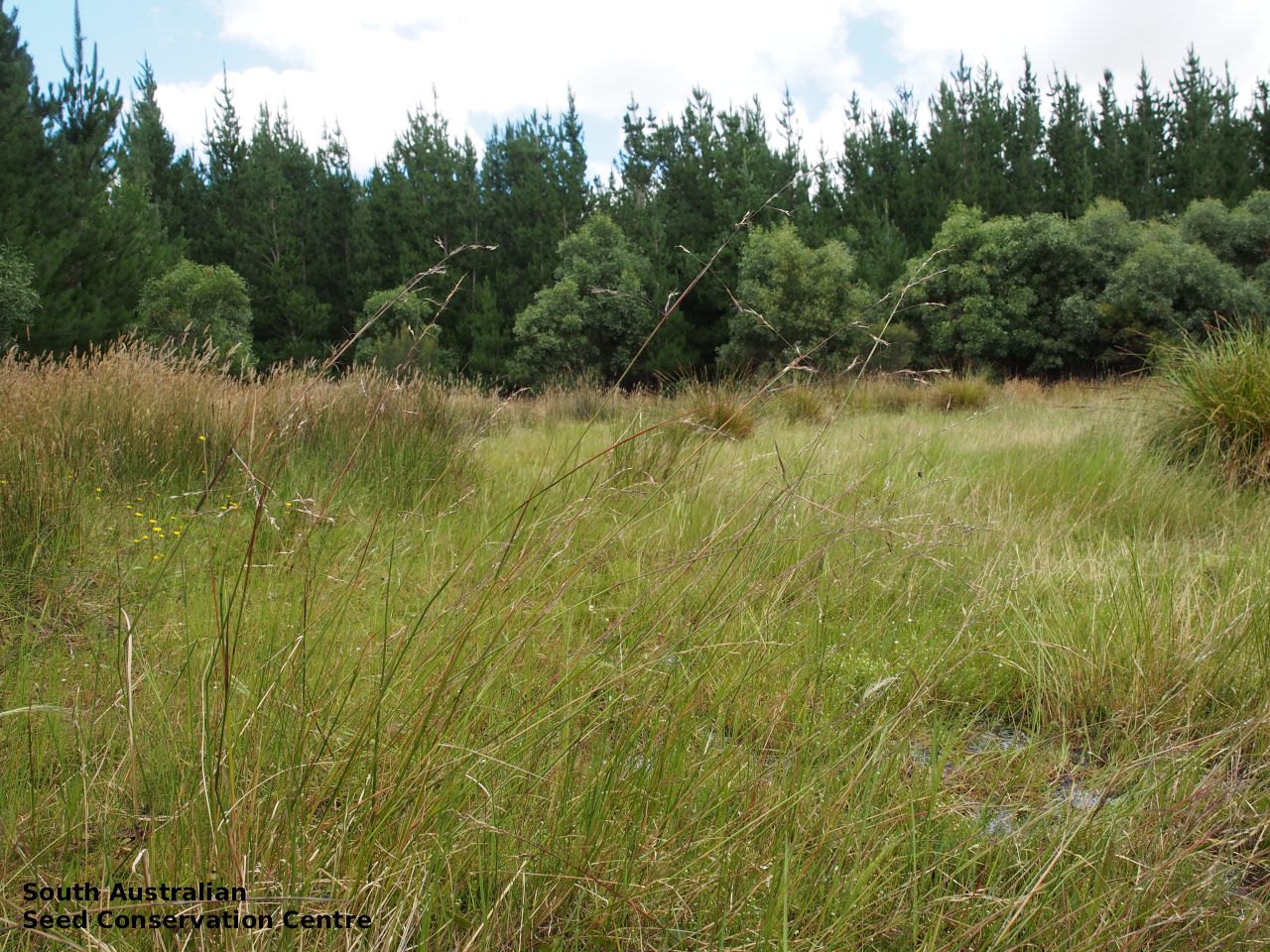
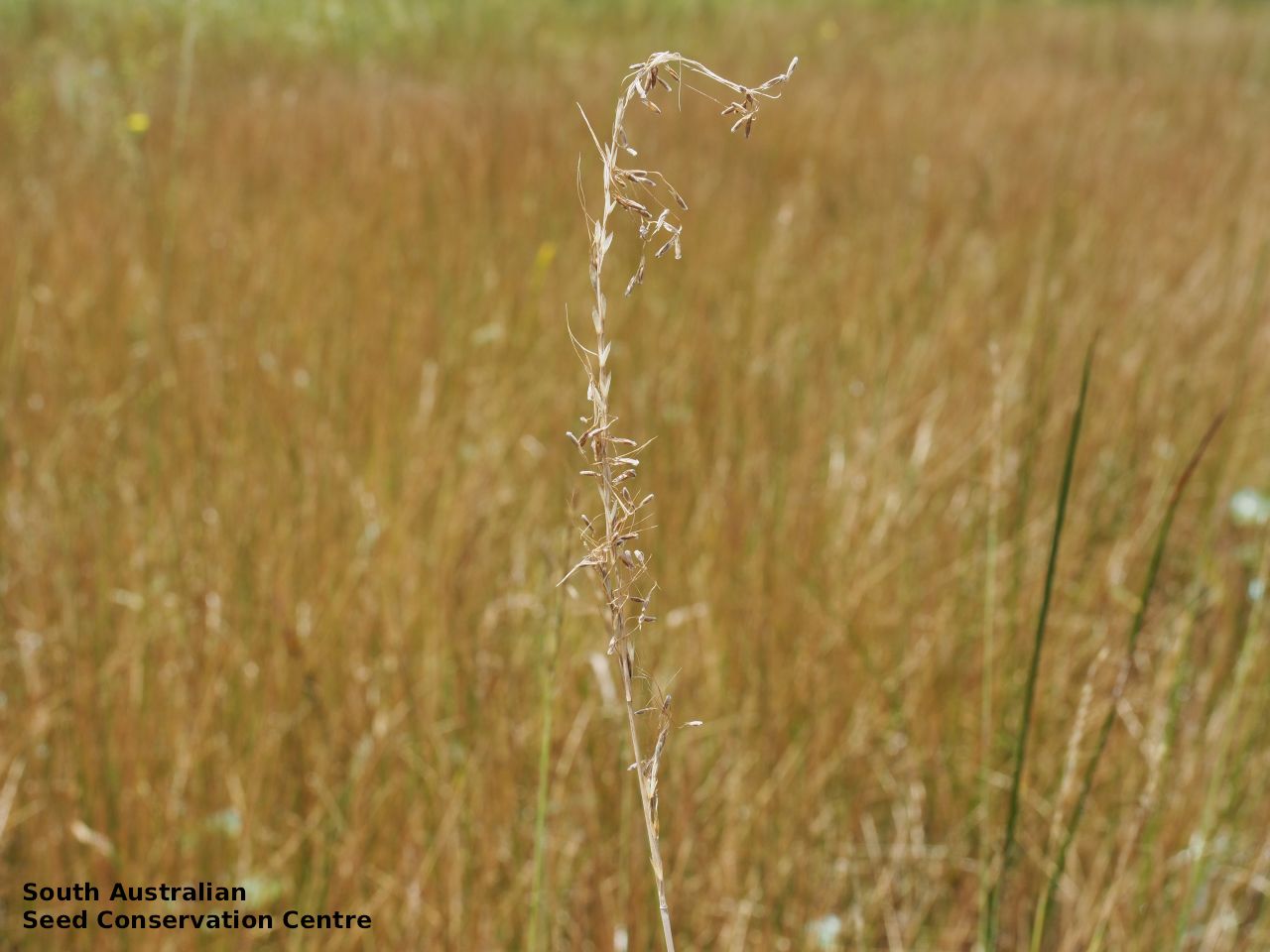
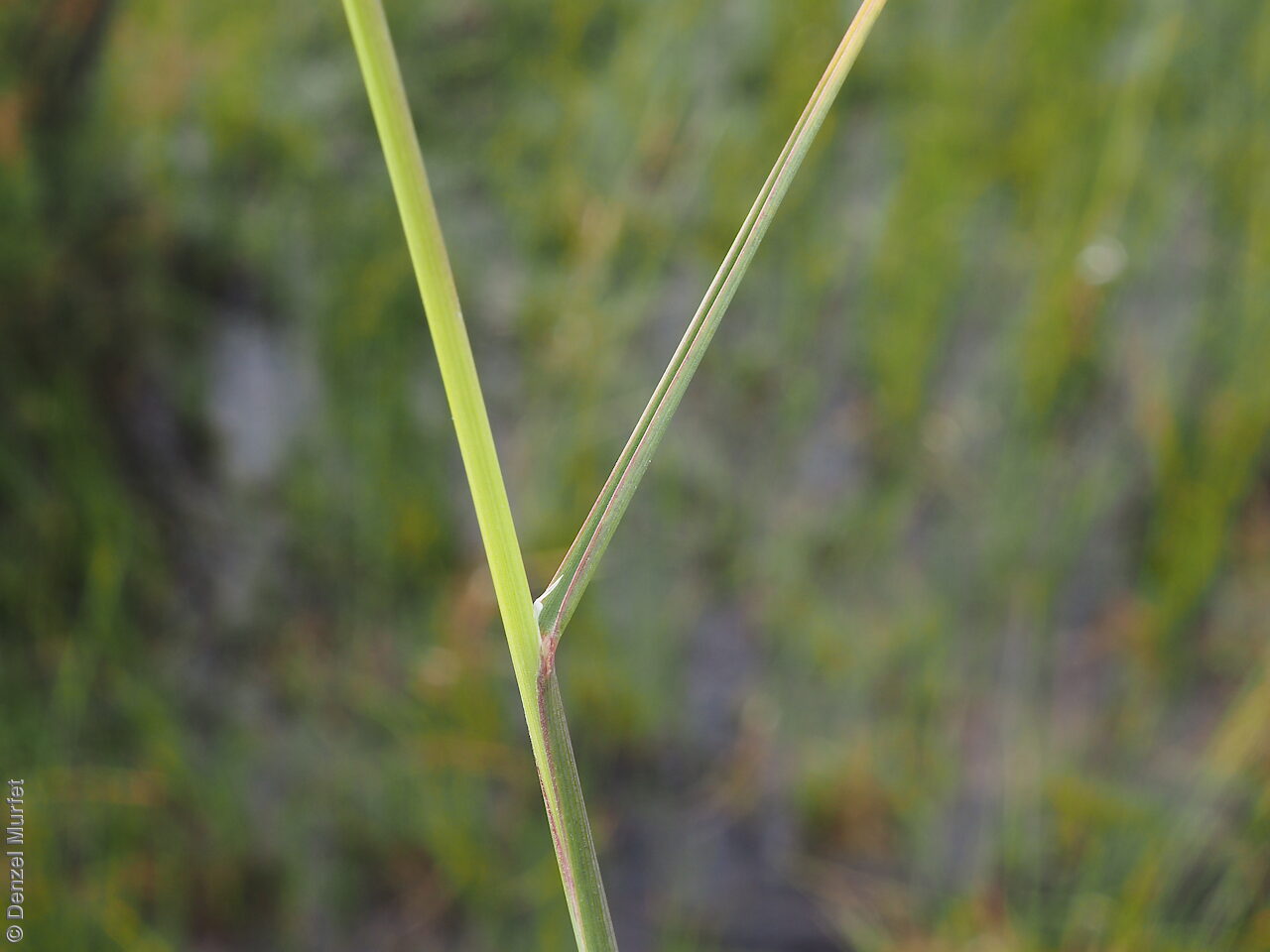
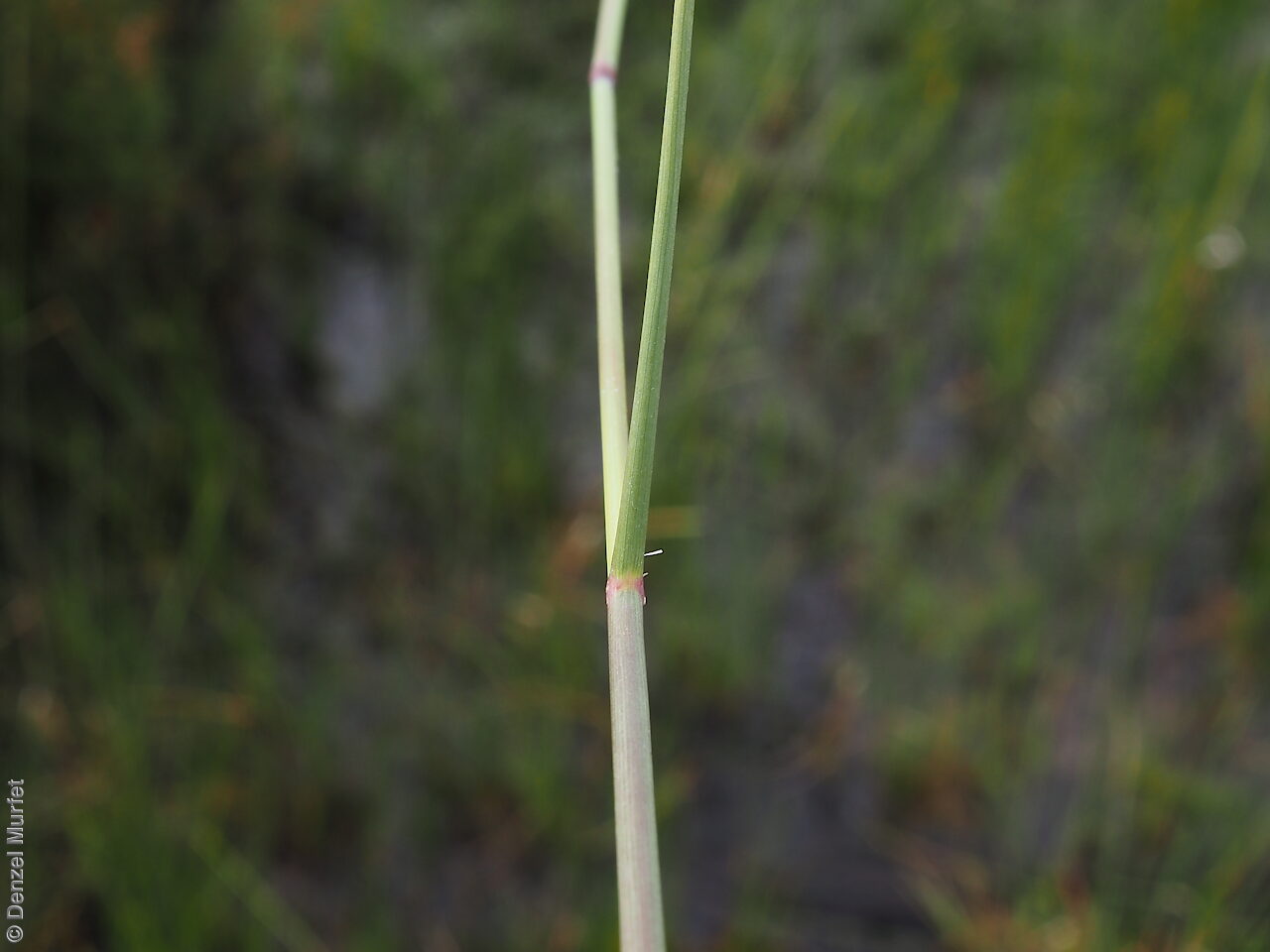
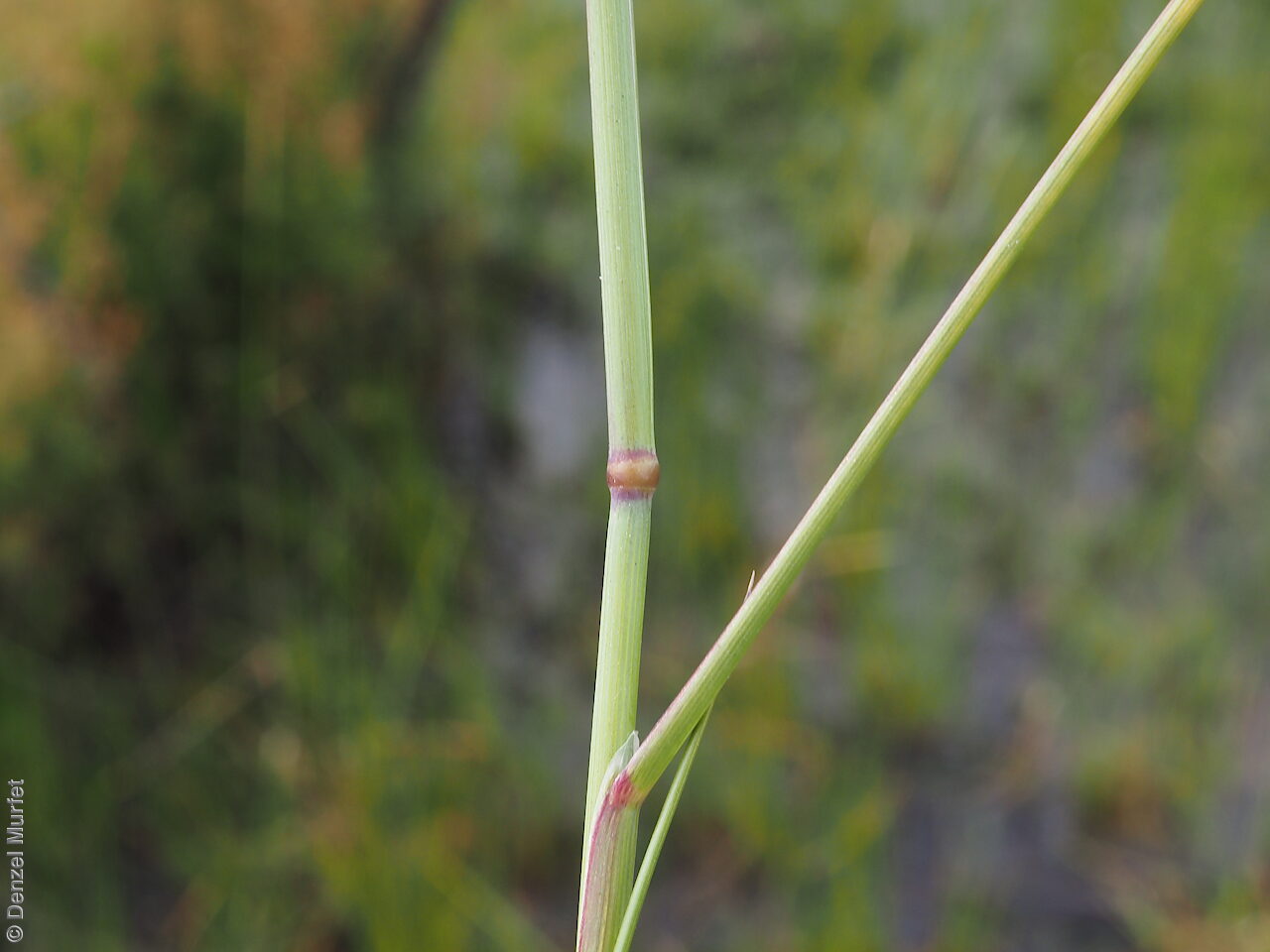
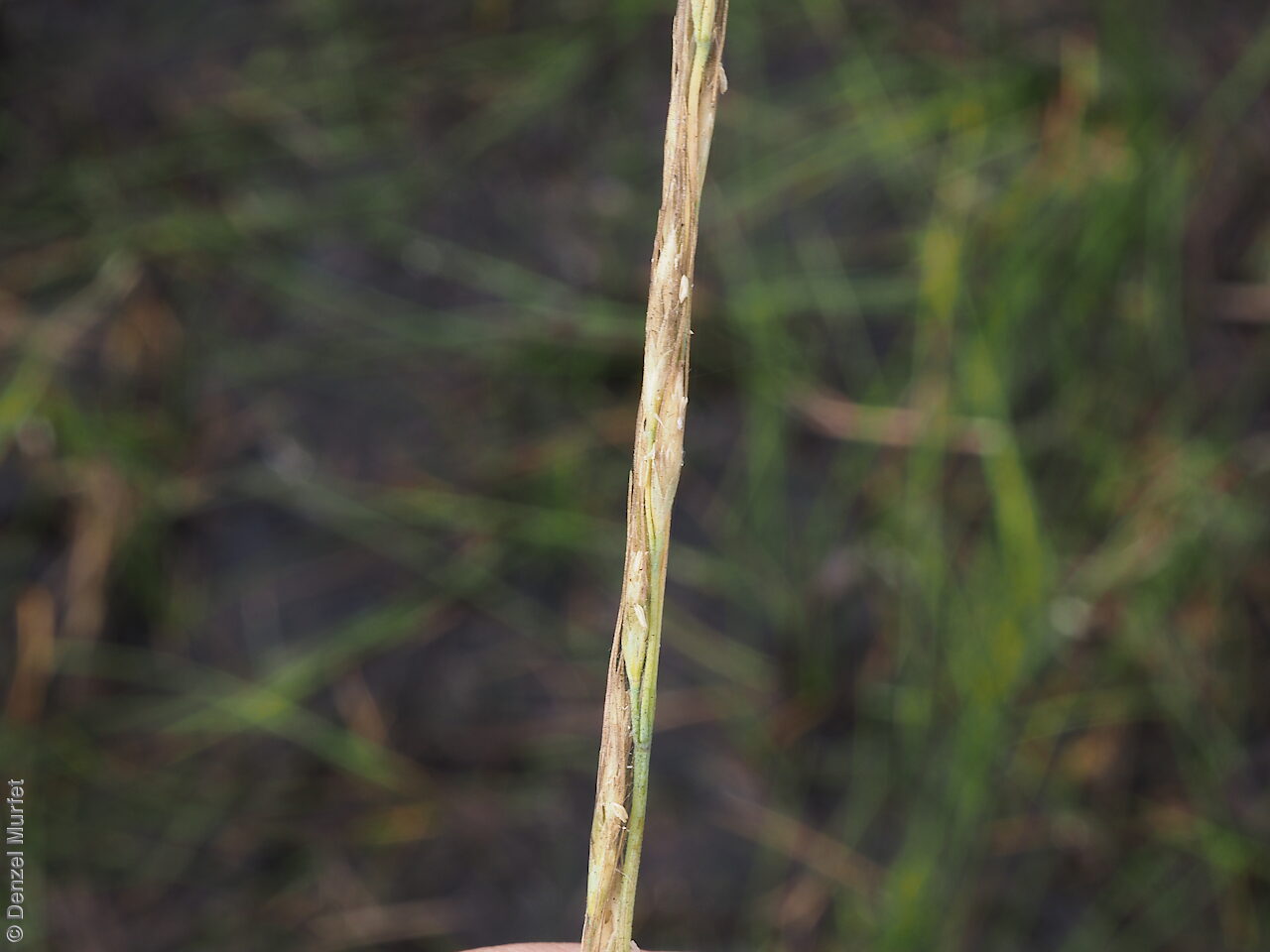
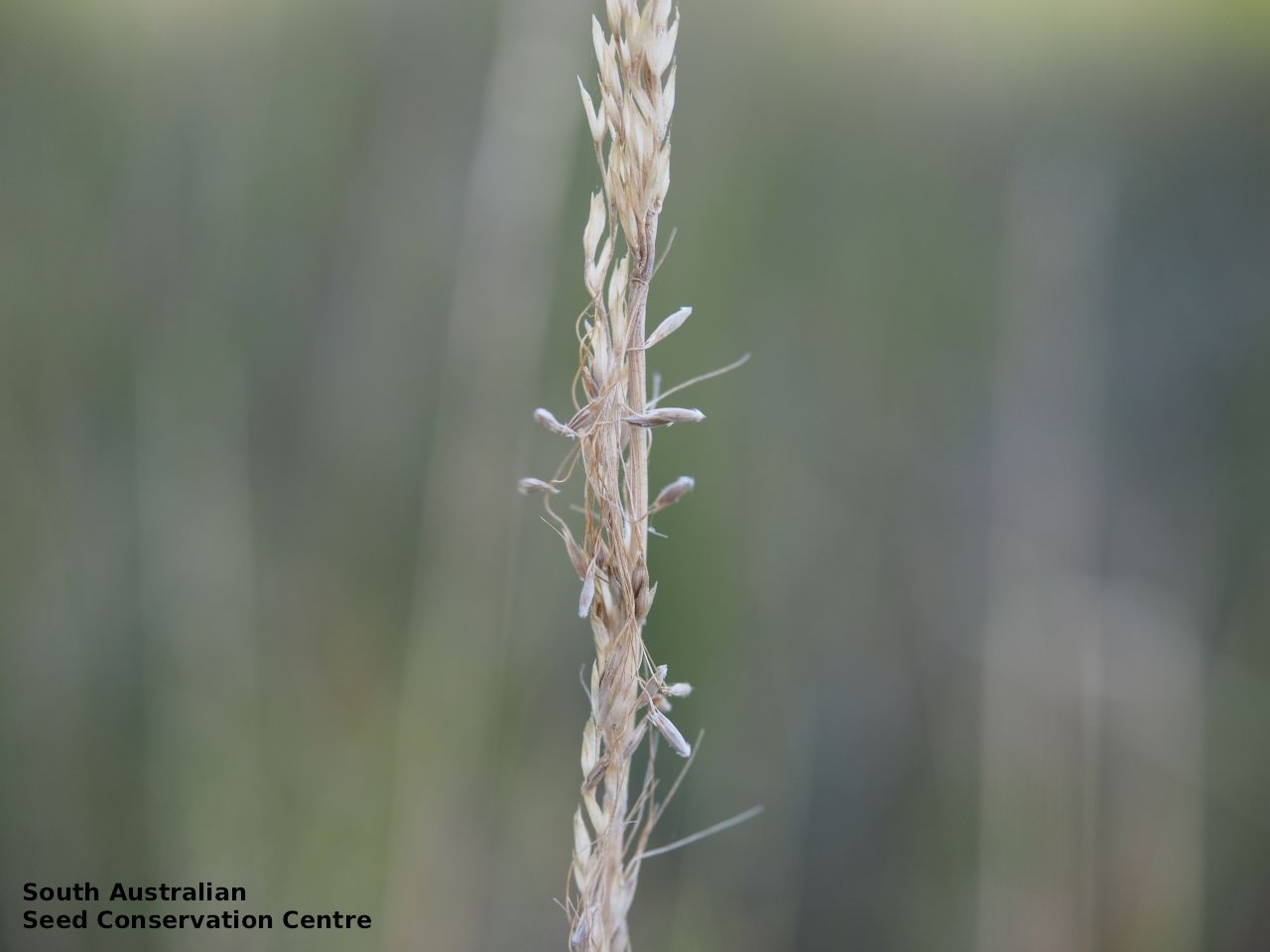

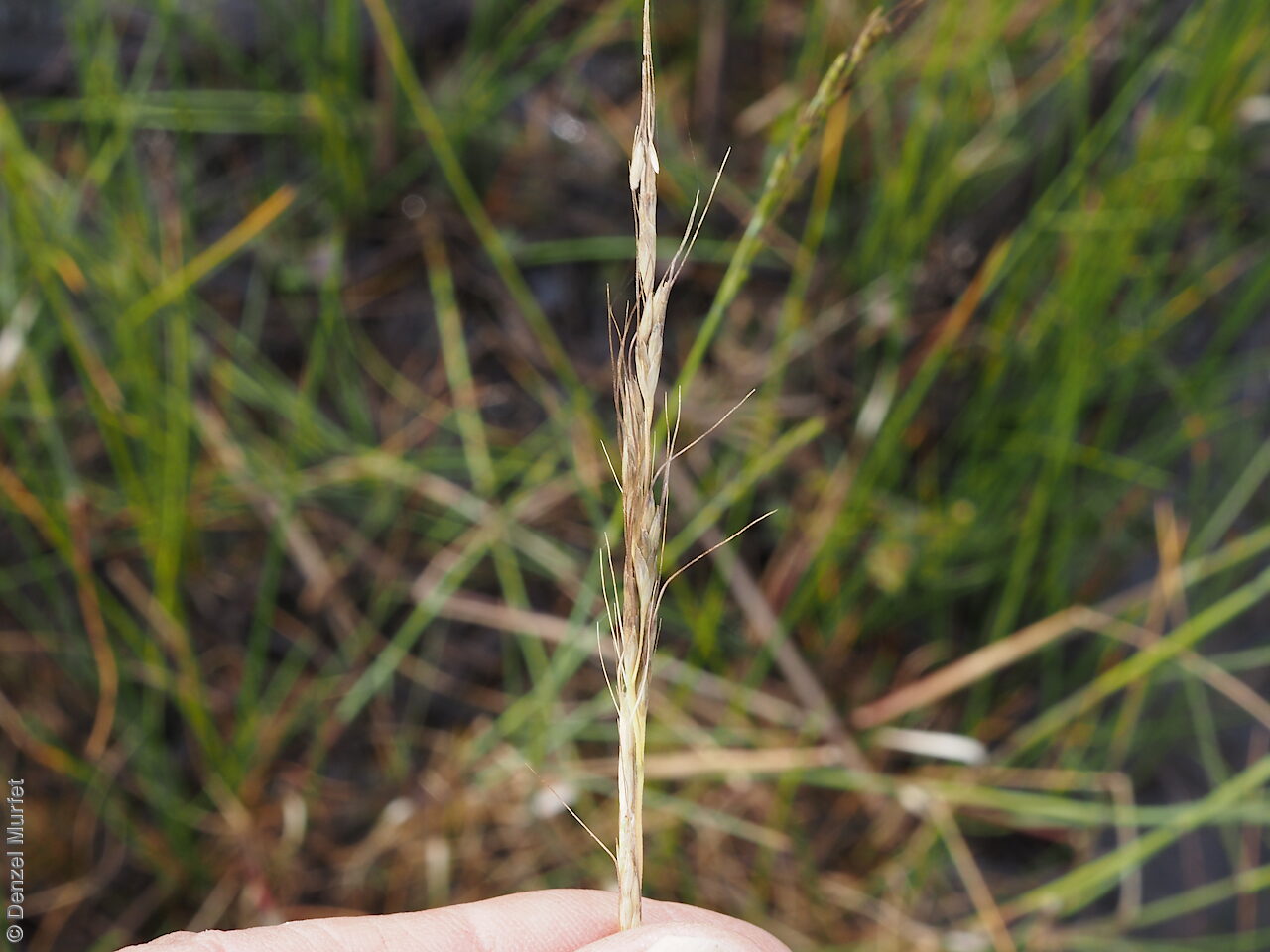
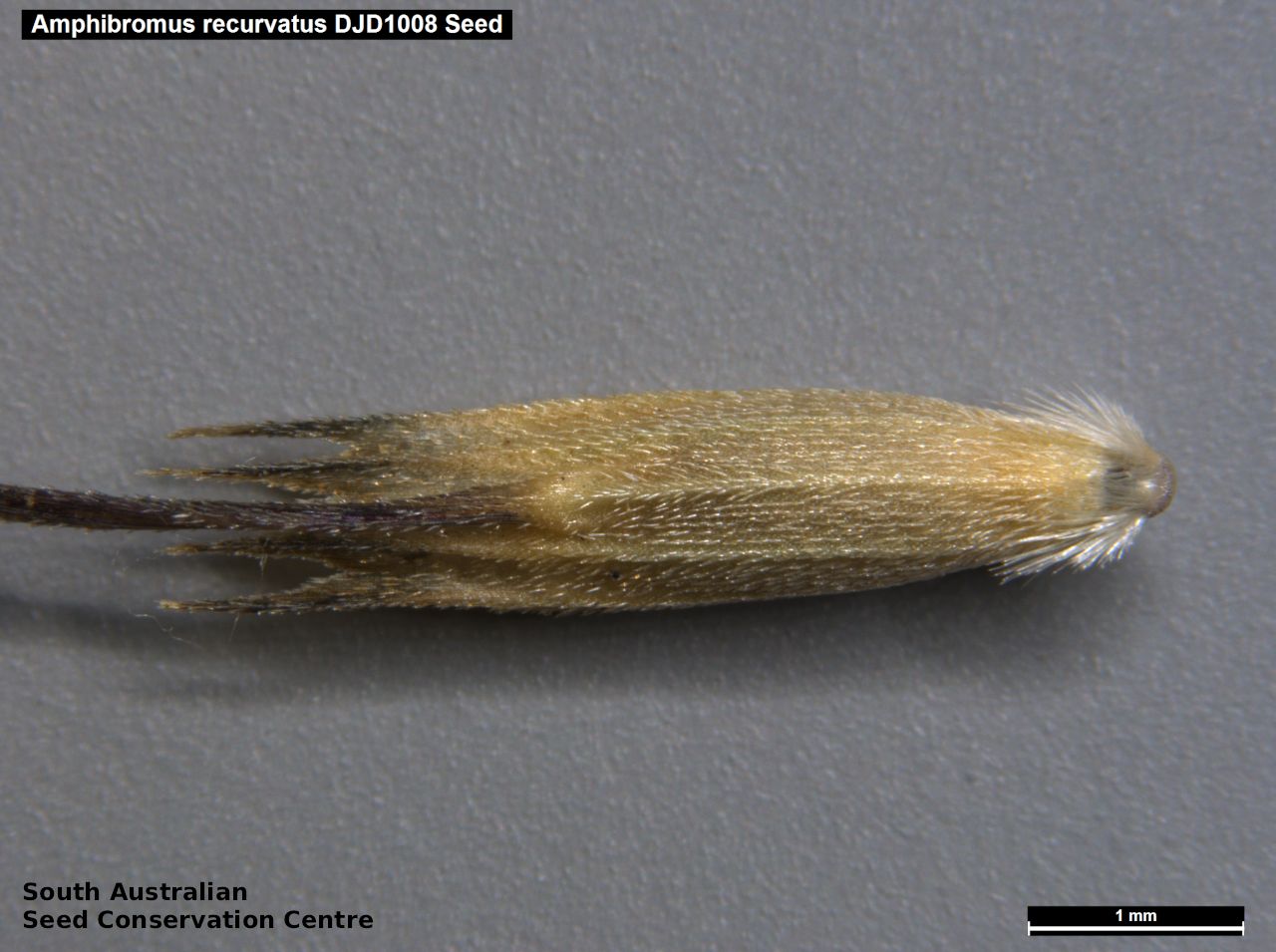

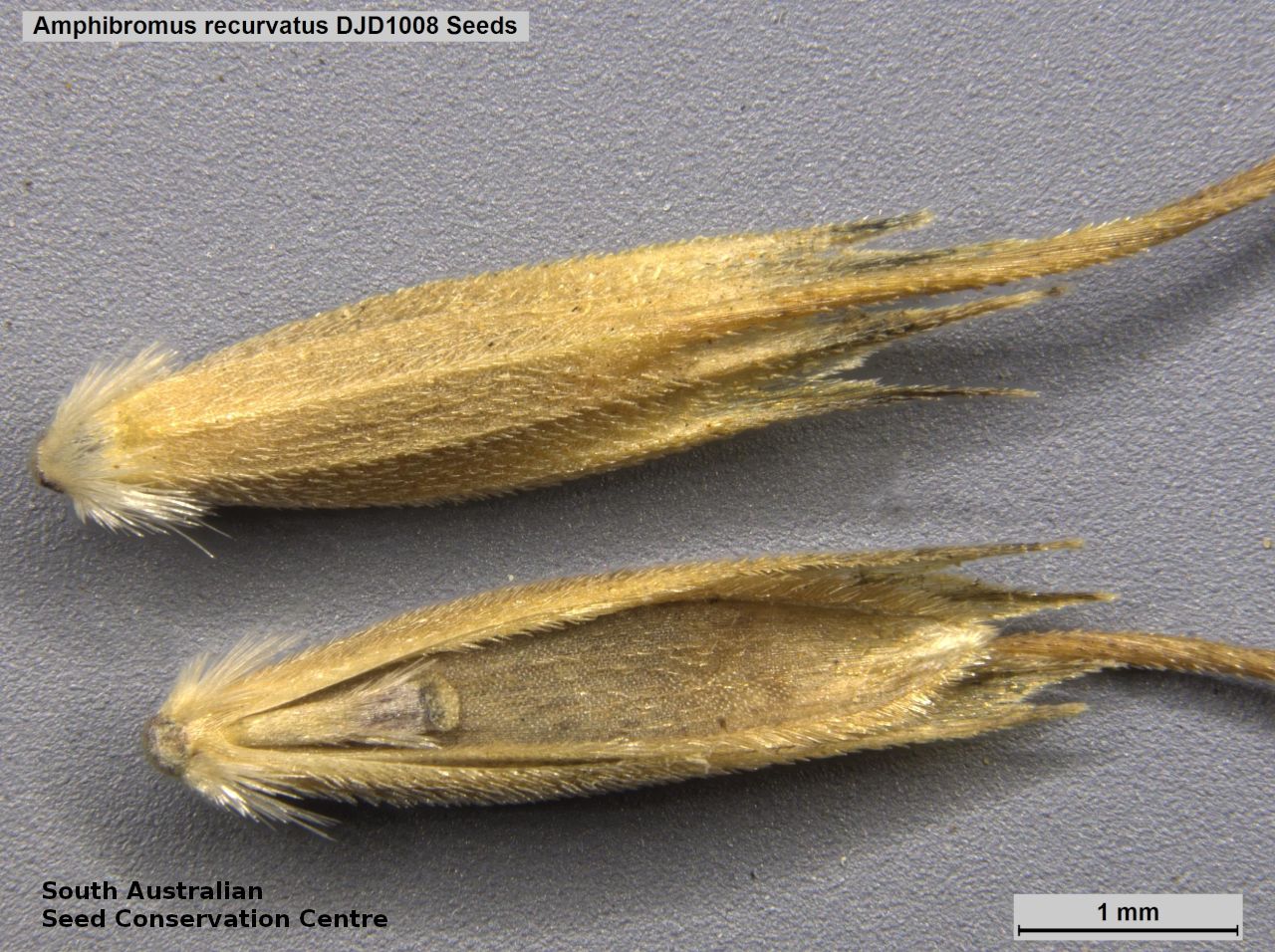
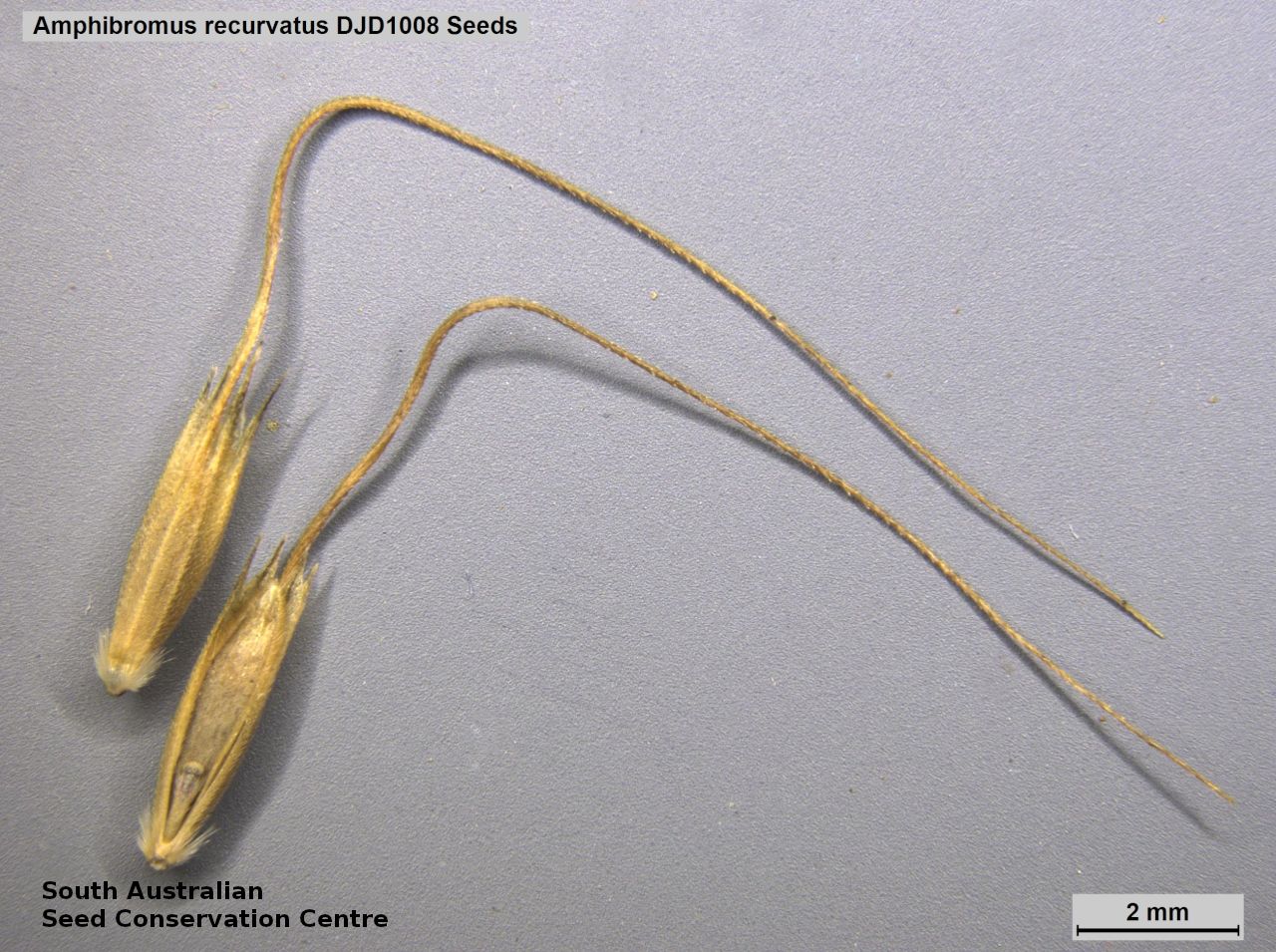
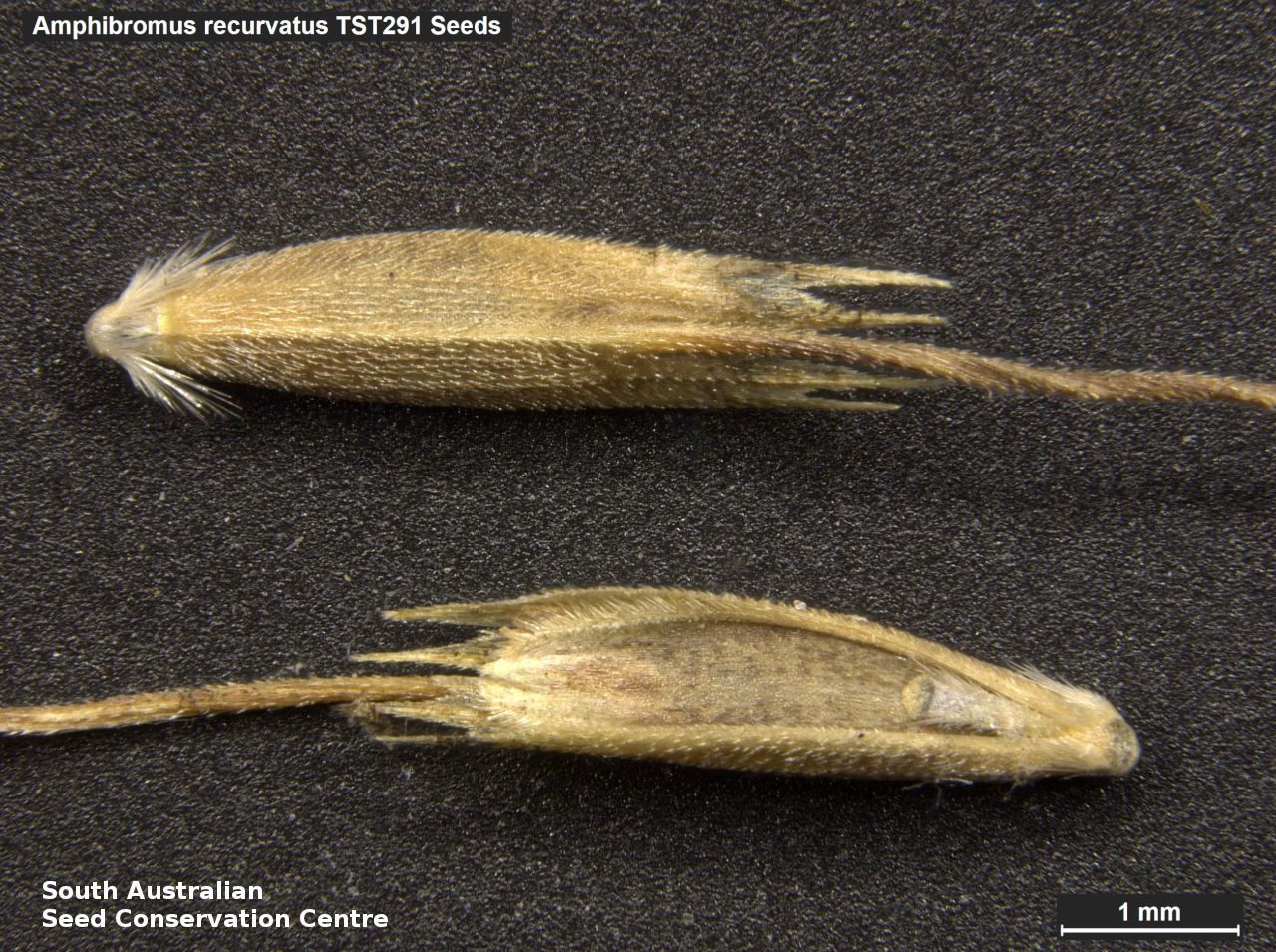
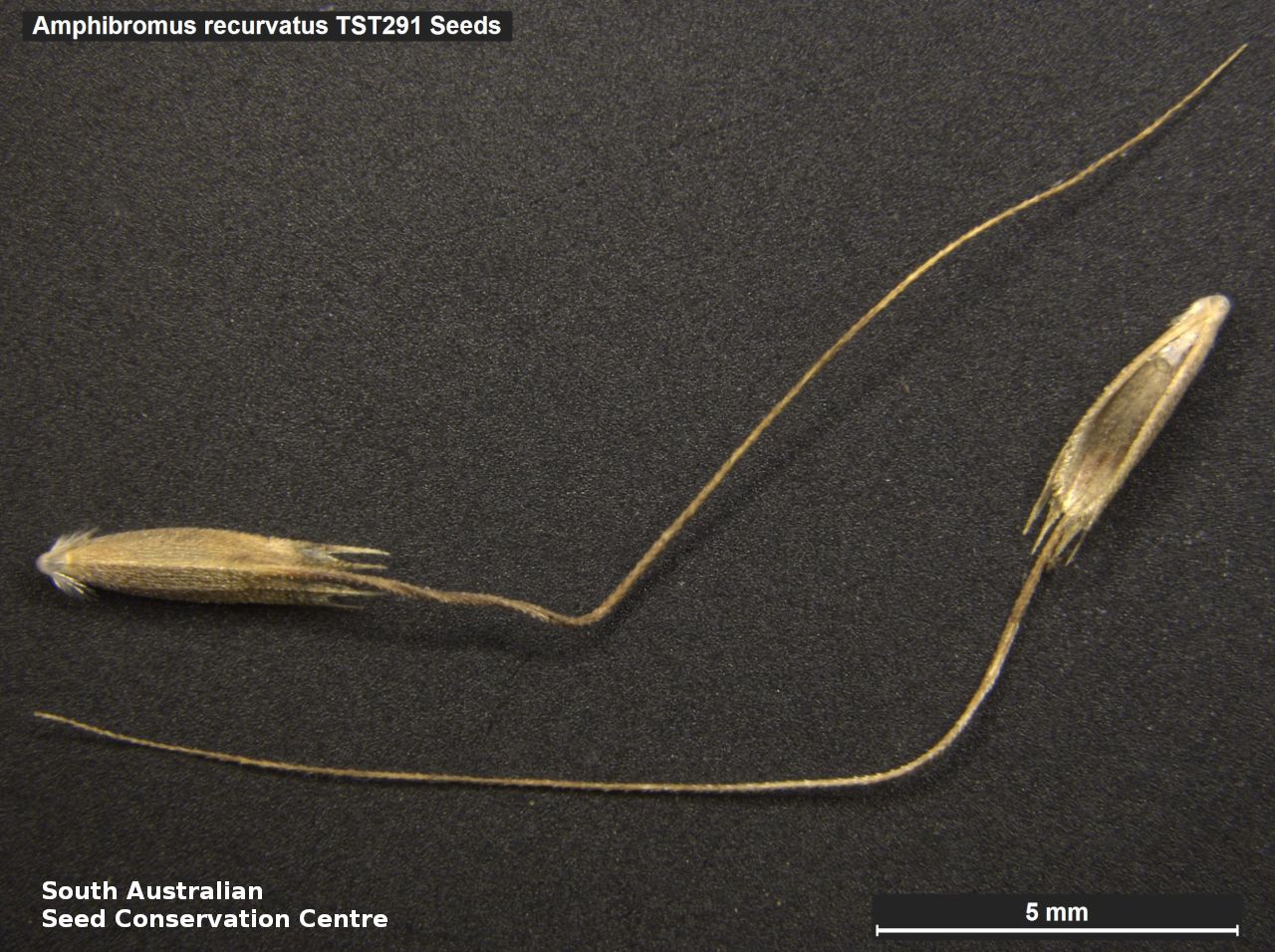

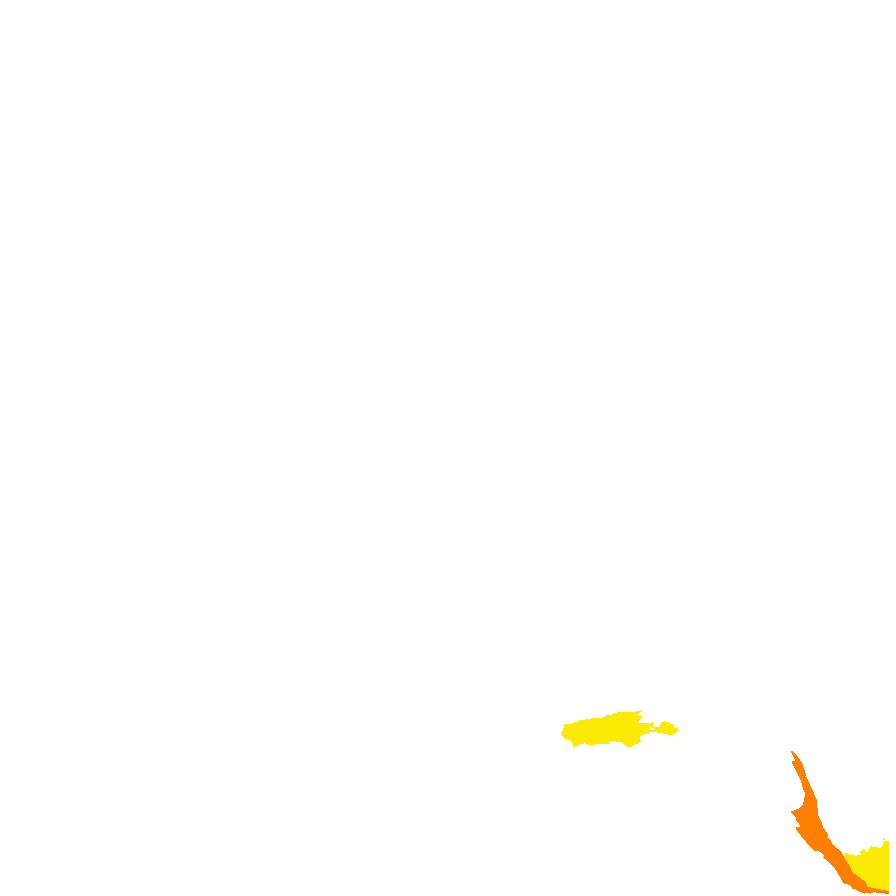
Botanical art
Etymology
Amphibromus from the Greek 'amphi' meaning double and 'bromus' a grass genus, referring to the spikelets resembling those of the genus Bromus. Recurvatus from the Latin 'recurvare' meaning to bend back, referring to the spikelets with spreading or reflexed awns.
Distribution and status
Found in a few sites on Kangaroo Island and the lower South-east in South Australia, growing in damp areas such as lagoons, waterholes and swamps. Also found in Victoria and Tasmania. Native. Rare in South Australia. Common in the other States.
Herbarium regions: Kangaroo Island, South Eastern
NRM regions: Kangaroo Island, South East
AVH map: SA distribution map (external link)
Plant description
Erect perennial grass to 1.5 m tall with leaf blades to 30 cm long and 3 mm wide, more or less glabrous below, scabrous above. Panicle erect, frequently purple-tinged to 20 cm long. Spikelets to 11 mm long, with 4-6 bisexual florets. Glumes subequal, more or less glabrous, frequently tinged with purple. Flowering between November and January. Fruits are lemma densely hairy, to 5.2 mm long with apex 4-toothed; teeth more or less equal, 0.43-1 mm long with purple veins extending to the teeth. Awn arising 34-45 (rarely 50)% of the lemma length from the a tip, bent, scarcely twisted;, hairy 9.7-18 mm long, pale-brown to purple-brown. Seeds are yellow-brown grain to 3mm long. Seed embryo type is lateral.
Seed collection and propagation
Collect seeds between November and February. Use hands to gently strip seeds off the mature seed spike that are turning straw colour. Mature seeds will come off easily. Alternatively, you can break off the whole seed spike. Place the seeds/spike in a tray and leave to dry for two weeks. No further cleaning is required if only seed collected. If seed spikes collected, use hand to strip off the mature seeds. Store the seeds with a desiccant such as dried silica beads or dry rice, in an air tight container in a cool and dry place. Seed viability can be low to high depending on maturity. Seeds are non-dormant, viable seed should germinate readily.
| Location | No. of seeds (weight grams) | Number of plants | Date collected | Collection number Collection location | Date stored | % Viability | Storage temperature |
|---|---|---|---|---|---|---|---|
| BGA MSB | 15,000 (9.8 g) 15,000 (9.8 g) | 100+ | 4-Dec-2006 | TST119 South Eastern | 1-Aug-2007 | 10% | +5°C, -18°C |
| BGA | 8,500 (3.17 g) | 50 | 23-Nov-2007 | RJB75971 South Eastern | 19-Sep-2008 | 95% | +5°C, -18°C |
| BGA | 7,000 (31.29 g) | 50 | 21-Dec-2007 | RJB76663 South Eastern | 19-Sep-2008 | 75% | +5°C, -18°C |
| BGA | 11,300 (11.35 g) | 100+ | 11-Dec-2018 | DJD3836 South Eastern | 24-Apr-2019 | 85% | -18°C, -80°C |
Number of plants: This is the number of plants from which the seeds were collected.
Collection location: The Herbarium of South Australia's region name.
% Viability: Percentage of filled healthy seeds determined by a cut test or x-ray.